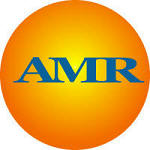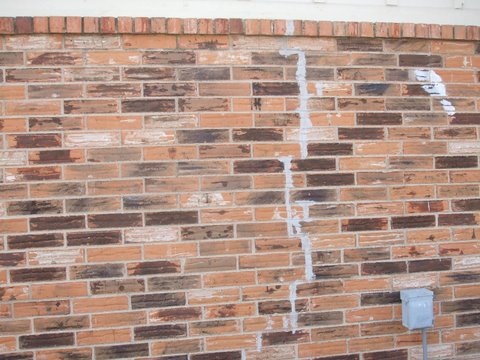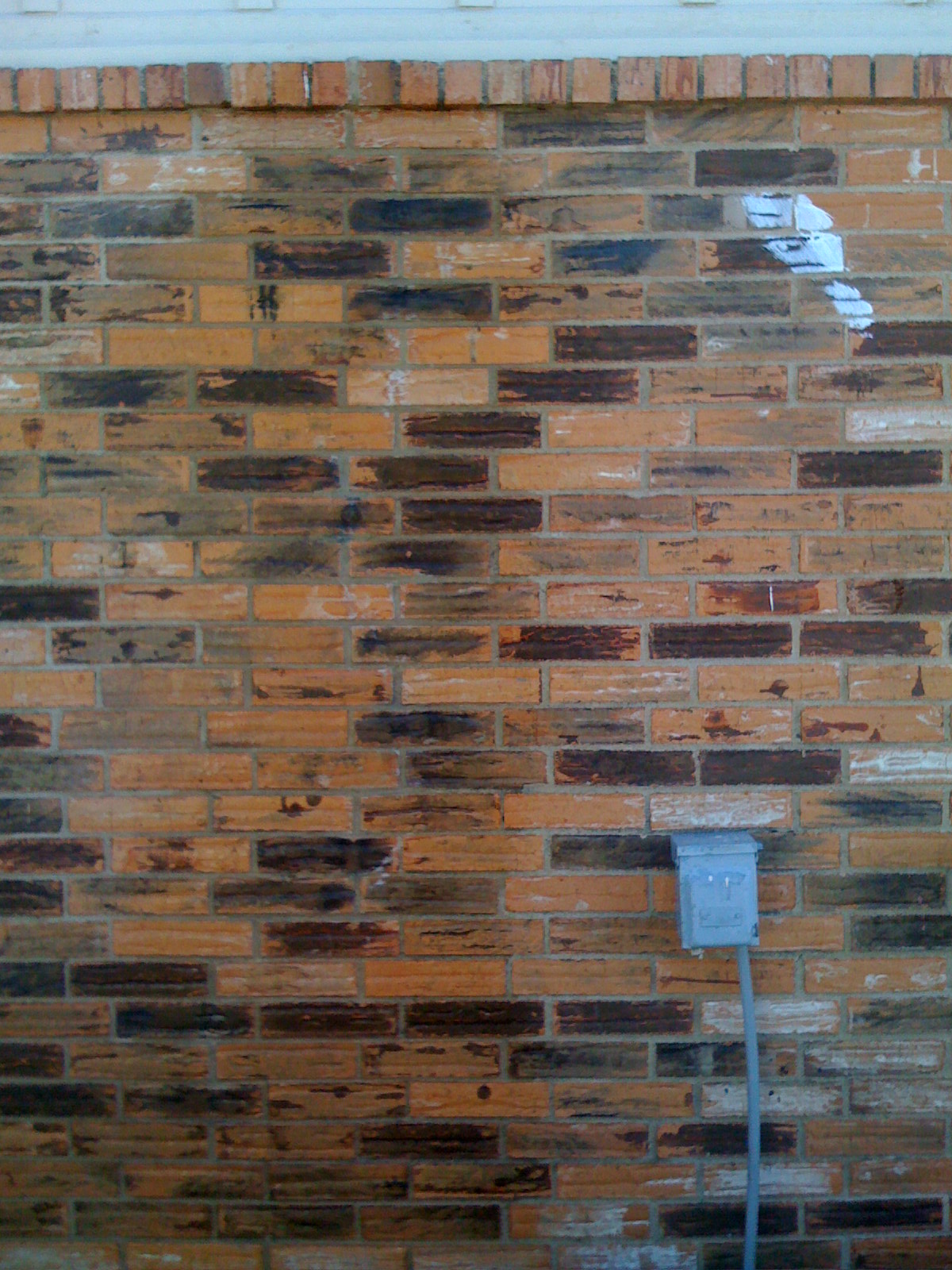

Welcome to AMR Labs.
Our focus is high quality masonry repair and the products and services needed to ensure the mortar repair is done right. Among these are
mortar testing,
mortar matching, pre-matched
mortar
mix, and other masonry repair products.
We provide mortar matching services across the U.S.
call:
(817) 366-8376
*AMR Labs*
1525 Corona Dr.
Granbury, TX 76048
Or email us:
mortarlab@gmail.com
Matching Mortar Color
Mortar matching is
available in many forms, but not all methods of
matching mortar will work for any project. This is especially true
of the most commonly used method.
In the most common mortar matching method,
there are assumptions
made in matching the mortar type, sand color and gradation, and
pigments, and the mortar is adjusted to provide a matching color
only. This practice is unacceptable in the repair and restoration of
masonry. Changing the mortar composition, mortar type, mortar
formula, sand color, sand gradation, or the formula of sand to
mix
ratio also changes the compressive strength of mortar, color and
texture of the mortar, and the ability of new mortar to bond with
old mortar. This generally results in re-cracking of the mortar
joints, chipping or spalling brick faces, and other damage to the
masonry walls.
This is why you need to use more detailed
mortar matching methods
that include mortar analysis testing practices.
Mortar testing provides a detailed mortar analysis for matching old mortar. This mortar matching test provides accurate usable data about the mortar and provides a detailed mortar formula for matching the original mortar mix tested from which the color can be adjusted to match as needed.
Matching Mortar Type
Mortar matching is similar to our
mortar test in some of the tests performed. In order to match the color of a mortar, we must
match certain base materials used in the original mortar. To do this, we perform a compressive strength or crushing
test. This gives us a general idea of the mortar type and ratio of binder materials.
Match Mortar Color
After we determine the proper amounts of binder materials, we proceed to
match the base tones of the mortar. These tones are the range between white and grey, and levels of mold and mildew. These
are the effects of sun light and moisture aging of the mortar. Most of this can be compensated, but some degree of mold and
mildew must reform naturally.
Matching Brick Mortar Color/Pigments
The next portion in
mortar matching is matching the color tones of stains and
pigments. These tones are compared to our charts to find a close starting point in
matching the color tones of the mortar.
Exact Mortar Match
After we have determined the mortar type, base tones, and color tones, we make a sample of mortar
to test and confirm our results. Adjustments are made to the
mortar match as needed until the mortar color is matched. Sometimes, many adjustments are needed and require multiple tests to perfect the
color match.
The cost of Mortar Matching is $325.00 per
set of mortars tested, or for a more precise formula with a testing report you can add a
color match to our full mortar analysis for $150. This is commonly
used for historic mortar matching. We need about a cup or 3-5 mortar
samples for matching. Surface samples are best for getting a closer mortar match.
Crumbling mortar samples are ok. We can still match them.
Testing and matching mortar color costs $325 separately, or you can
add a color match to a full mortar analysis for $150
Add a color match to Mortar Composition Testing for $150.00
Matching Historic Mortar Composition/Color
In commercial and historic mortar restoration, it is common place to
get the mortar analyzed and matched through testing samples of the
mortar. However, many of the testing methods are over priced and
inaccurate. The two most common used or recommended testing methods
for historic mortar analysis are the ASTM C-1324 and acid digestion
method of testing hardened mortar. These two mortar testing analyses
are the most and least expensive tests, but neither provide reliable
results.
C-1324 is the most expensive type of historic mortar analysis which
uses a spectrographic microscope to create a colorful image of the
mortar sample. This image is then visually inspected and a best
guess of proportions for the ratio is determined as the
composition
formula. There is a little more to it, but the accuracy of the
results is limited to the interpretation of the analyst and their
onsite experience as a mason. With their limited or likely
non-existent experience in the field, they are unable to provide a
quality interpretation of the testing data.
The acid digestion method for testing mortar composition is the
least technical and least expensive
mortar analysis, and is the most
commonly used method for testing old mortar. Acid digestion analysis
uses a balloon to capture the escaping gases released during
analysis. The balloon swells and is measured to determine the
quantity of the total binder materials. This test alone is not
capable of accurate results because, the results are still an
interpreted analysis of how much of the gas released is coming from
each binder material. This factor alone is problematic because the
sand aggregates tend to have a portion of cementious material that
contaminates the results. Some sands used are entirely cementious
materials. This doesn't happen often, but it does happen.
There is a better way to test the composition of mortar samples for
historic mortar matching, and it is not much more expensive than the
acid digestion test. This method is proprietary to AMR Labs and is
becoming more excepted for this use due to the accuracy of the
results. This testing method for
matching mortar composition
combines the results of some other astm testing methods such as the
C-109 crushing analysis, acid digestion, E-11 sand sieve analysis,
and some more scientific analyses where we collect additional data
from some of these other testing methods for validations.
One example of this is the amount of weight loss during the
digestion of mortar samples is cross referenced with the compressive
strength and mortar type and using the specific gravity of the
binder materials, we are able to validate the accuracy of the
results. This is a limited example because there are other factors
that change variables such as the size and shape of sand aggregates
changes the compressive strength of the mortar as much as the ratio
of sand to mix.
Mortar matching through our complete mortar analysis and adding a detailed mortar color match provides a exact mortar formula for matching the existing mortar color and composition. With this complete formula, we can manufacture bags of custom matched mortar for your project. This is however limited to mortars using type S/SA lime as we currently do not have a supplier for the historic lime.
Historic Lime Mortar Matching
In the past, we provided the analysis report and the
formula and
Virginia Lime Works provided the manufacturing of the historic lime mortars. We
have been told they are no longer around and we haven't found a
suitable replacement as yet. Places we have found that may assist
you if you need the historic lime mortar manufacturing are US
Heritage Group and Lime.org.
Type S/SA and Historic Lime
One of the most common questions asked is the difference between
historic lime and type S/SA lime in mortar. The simple answer is
they are both lime, but the historic lime mortar uses a larger
particle size and was sometimes not screened allowing large chunks
to be mixed into the mortar. This is easily recognized by the large
unmixed pieces of lime. Those that were screened are a little harder
to identify, but the type S/SA lime uses a very fine screen, and
tend to be used in harder mortar types and newer mortar more often.
If your mortar requires type S/SA lime, we can provide the
manufacturing of custom bags of pre-matched mortar.
Pre-Matched Mortar
Pre-matched mortars are bags of mortar custom made to match the
existing hardened mortar of your masonry repair. These bags are made using the formula from the
mortar matching test.
Each box contains 2 bags of mortar.
We provide a brick repair guide and training videos to assist you in completing your masonry repairs.
We can help you find a local masonry repair contractor in:
Brick Repair Dallas,
Fort Worth,
Hurst, Euless, Bedford,
NRH, Benbrook, Crowley,
Burleson, Cleburne, Tarrant County,
and Granbury
Below are the before and after pictures of a project where the old repairs are smeared and used mis-matched mortar,
and in the after photo, mortar smears are cleaned off the bricks and the mortar is repaired with matching mortar. You
will notice the second picture looks darker. This is because the wall is wet from cleaning and the pictures were taken
the same day. The first in the morning with more direct light and the second in the late afternoon when the sun was on
the other side of the building.
As you can see, masonry repairs look much better when the mortar is tested and properly
matched with our mortar matching services.


